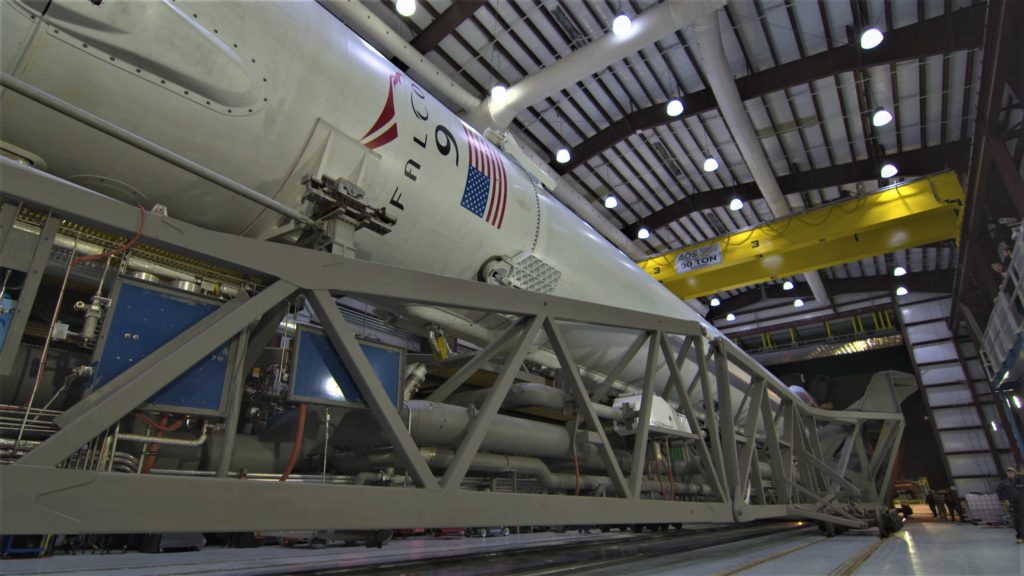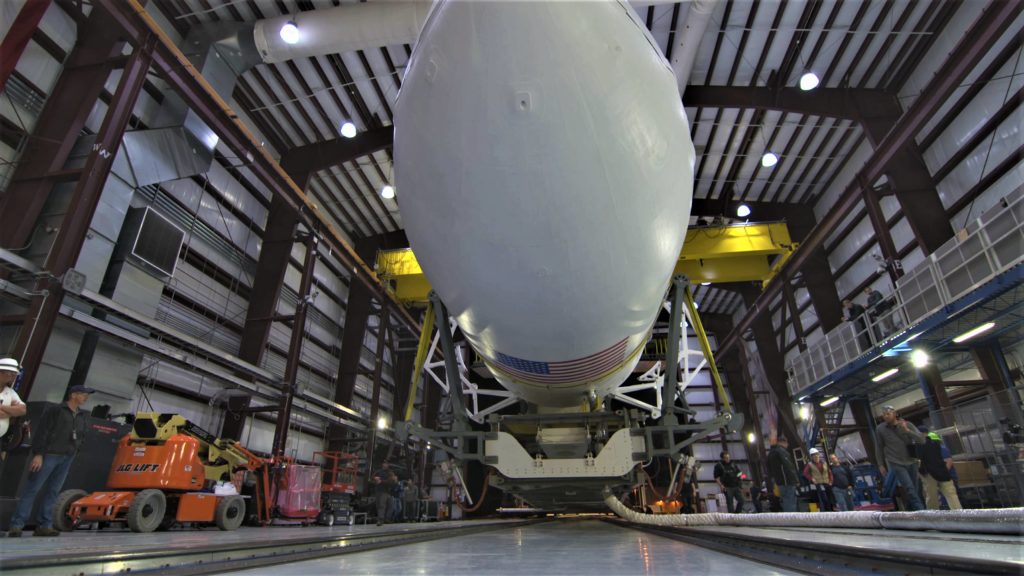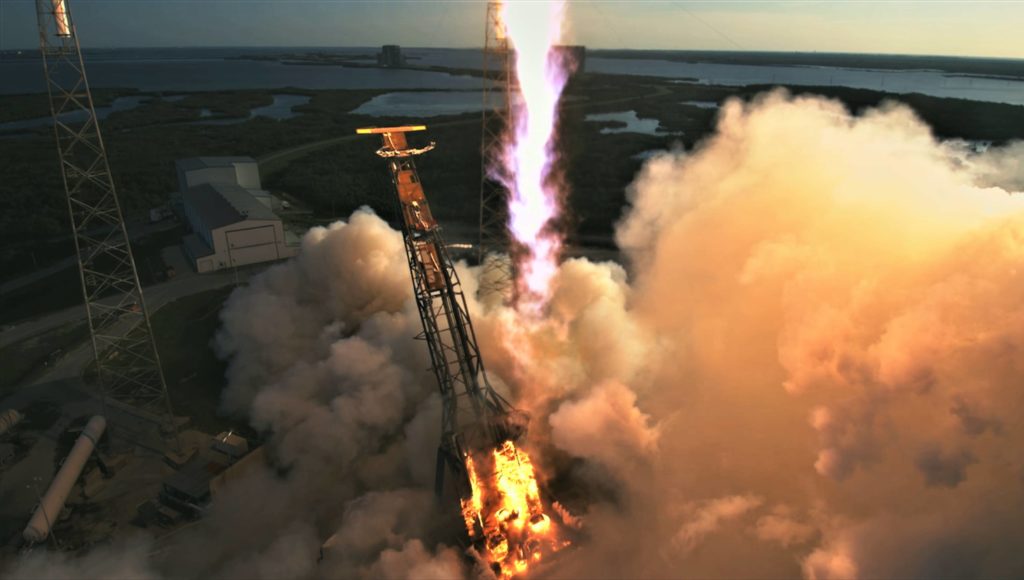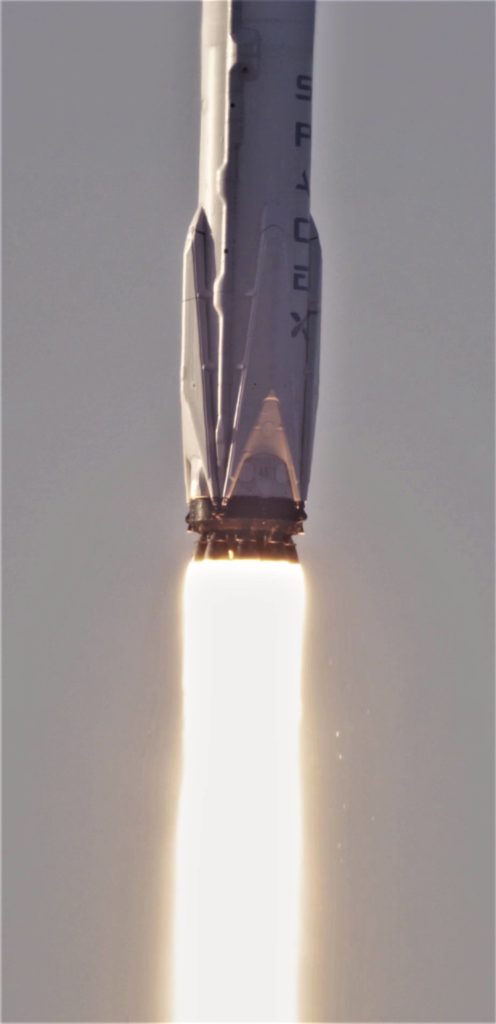
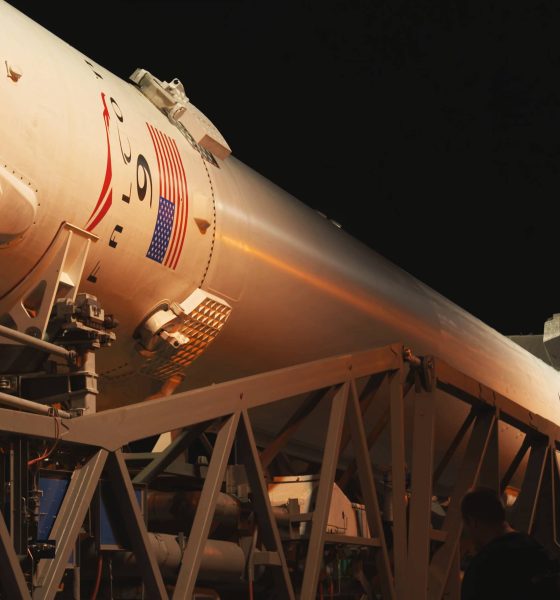
SpaceX
SpaceX’s last Falcon 9 Block 4 launch showcased in NASA’s behind-the-scenes recap
Five months after the Transiting Exoplanet Survey Satellite (TESS) was placed in orbit, NASA has published a 4K video recapping the spacecraft’s pre-launch preparations and launch atop a SpaceX Falcon 9 Block 4 rocket.
Why the video in question took almost half a year to go from footage capture to publishing is unclear, but it easily takes the crown as the best look in years at the work that goes on behind the scenes of every SpaceX Falcon 9 launch.
— Eric Ralph (@13ericralph31) September 26, 2018
In the case of NASA’s TESS spacecraft, launched on April 18th, 2018, the SpaceX rocket assigned to the mission happened to include the last new Falcon 9 booster manufactured before production was switched over to the vehicle’s upgraded Block 5 cousin. Optimized with reusability, reliability, and NASA’s human spaceflight standards in mind, Falcon 9 Block 5 successfully completed its launch debut on May 11th, and the upgraded rocket is a few weeks away from its second reuse and sixth launch attempt.
— Eric Ralph (@13ericralph31) September 26, 2018
Falcon 9 B1045, the booster that launched TESS, successfully landed aboard SpaceX drone ship Of Course I Still Love You roughly nine minutes after launch, whereby it was returned to Cape Canaveral and refurbished in just 72 days, SpaceX’s quickest booster turnaround yet. Its second and final launch – sending SpaceX’s 15th Cargo Dragon mission to the International Space Station – went off without a hitch on June 29th, bringing SpaceX operations of non-Block 5 rockets to a quiet and routine close.
— Eric Ralph (@13ericralph31) September 26, 2018
NASA’s recap video of TESS’ prelaunch preparations and the activities leading up to and just after Falcon 9’s launch includes some of the best views available of the work that goes on behind the scenes of every SpaceX mission. Among myriad subjects included in the ten-minute video, viewers are given privileged views of all phases of the NASA spacecraft’s encapsulation inside Falcon 9’s payload fairing, perspectives of SpaceX’s rocket rollout operations at Launch Complex-40 (LC-40), uncut views of the rocket’s launch from camera angles inaccessible to the public, and more.
- Falcon 9 B1045 prepares for its first of two launches, April 2018. (NASA/SpaceX)
- Falcon 9 B1045 prepares for its first of two launches, April 2018. (NASA/SpaceX)
- Launch Complex 40 takes a beating during launch, but it’s designed to stand up to Falcon 9’s 7,607 kN (1,710,000 lbf) of thrust. (NASA/SpaceX)
- One frame of a slow-motion telephoto view of Falcon 9 B1045 just after launch. (NASA/SpaceX)
To top it off, the recap was published on YouTube at a high framerate and 4K (“UltraHD”) resolution, providing a number of opportunities to create uniquely high-quality GIFs of a SpaceX and NASA launch. A few of those snippets can be seen throughout this article and the full video is available to watch at the link below.
For prompt updates, on-the-ground perspectives, and unique glimpses of SpaceX’s rocket recovery fleet check out our brand new LaunchPad and LandingZone newsletters!

News
SpaceX shades airline for seeking contract with Amazon’s Starlink rival

SpaceX employees, including its CEO Elon Musk, shaded American Airlines on social media this past weekend due to the company’s reported talks with Amazon’s Starlink rival, Leo.
Starlink has been adopted by several airlines, including United Airlines, Qatar Airways, Hawaiian Airlines, WestJet, Air France, airBaltic, and others. It has gained notoriety as an extremely solid, dependable, and reliable option for airline travel, as traditional options frequently cause users to lose connection to the internet.
Many airlines have made the switch, while others continue to mull the options available to them. American Airlines is one of them.
A report from Bloomberg indicates the airline is thinking of going with a Starlink rival owned by Amazon, called Leo. It was previously referred to as Project Kuiper.
American CEO Robert Isom said (via Bloomberg):
“While there’s Starlink, there are other low-Earth-orbit satellite opportunities that we can look at. We’re making sure that American is going to have what our customers need.”
Isom also said American has been in touch with Amazon about installing Leo on its aircraft, but he would not reveal the status of any discussions with the company.
The report caught the attention of Michael Nicolls, the Vice President of Starlink Engineering at SpaceX, who said:
“Only fly on airlines with good connectivity… and only one source of good connectivity at the moment…”
CEO Elon Musk replied to Nicolls by stating that American Airlines risks losing “a lot of customers if their connectivity solution fails.”
American Airlines will lose a lot of customers if their connectivity solution fails
— Elon Musk (@elonmusk) December 14, 2025
There are over 8,000 Starlink satellites in orbit currently, offering internet coverage in over 150 countries and territories globally. SpaceX expands its array of satellites nearly every week with launches from California and Florida, aiming to offer internet access to everyone across the globe.
Currently, the company is focusing on expanding into new markets, such as Africa and Asia.
News
Tesla hints at Starlink integration with recent patent
“By employing polymer blends, some examples enable RF transmission from all the modules to satellites and other communication devices both inside and outside the vehicle.”

Tesla hinted at a potential Starlink internet terminal integration within its vehicles in a recent patent, which describes a vehicle roof assembly with integrated radio frequency (RF) transparency.
The patent, which is Pub. No U.S. 2025/0368267 describes a new vehicle roof that is made of RF-transparent polymer materials, allowing and “facilitating clear communication with external devices and satellites.”
Tesla believes that a new vehicle roof design, comprised of different materials than the standard metallic or glass elements used in cars today, would allow the company to integrate modern vehicular technologies, “particularly those requiring radio frequency transmission and reception.
Tesla has recently filed a US patent application on integrating RF transparent materials into the roof structure.
“facilitating clear communication with external devices and satellites”
Tesla fleet is getting @Starlink connectivity integration soon. LFG @Tesla @elonmusk… pic.twitter.com/bLa8YtPLd1
— Chansoo Byeon (@Chansoo) December 9, 2025
Instead of glass or metallic materials, Tesla says vehicles may benefit from high-strength polymer blends, such as Polycarbonate, Acrylonitrile Butadiene Styrene, or Acrylonitrile Styrene Acrylate.
These materials still provide ideal strength metrics for crashworthiness, stiffness for noise, vibration, and harshness control, and are compliant with head impact regulations.
They would also enable better performance with modern technologies, like internet terminals, which need an uninterrupted signal to satellites for maximum reception. Tesla writes in the patent:
“By employing polymer blends, some examples enable RF transmission from all the modules to satellites and other communication devices both inside and outside the vehicle.”

One of the challenges Tesla seems to be aware of with this type of roof design is the fact that it will still have to enable safety and keep that at the forefront of the design. As you can see in the illustration above, Tesla plans to use four layers to increase safety and rigidity, while also combating noise and vibration.
It notes in the patent that disclosed examples still meet the safety requirements outlined in the Federal Motor Vehicle Safety Standards (FMVSS).
Starlink integrated directly into Tesla vehicles would be a considerable advantage for owners. It would come with a handful of distinct advantages.
Initially, the inclusion of Starlink would completely eliminate cellular dead zones, something that is an issue, especially in rural areas. Starlink would provide connectivity in these remote regions and would ensure uninterrupted service during road trips and off-grid adventures.
It could also be a critical addition for Robotaxi, as it is crucial to have solid and reliable connectivity for remote monitoring and fleet management.
Starlink’s growing constellation, thanks to SpaceX’s routine and frequent launch schedule, will provide secure, stable, and reliable internet connectivity for Tesla vehicles.
Although many owners have already mounted Starlink Mini dishes under their glass roofs for a similar experience, it may be integrated directly into Teslas in the coming years, either as an upgrade or a standard feature.
Investor's Corner
SpaceX IPO is coming, CEO Elon Musk confirms
However, it appears Musk is ready for SpaceX to go public, as Ars Technica Senior Space Editor Eric Berger wrote an op-ed that indicated he thought SpaceX would go public soon. Musk replied, basically confirming it.

Elon Musk confirmed through a post on X that a SpaceX initial public offering (IPO) is on the way after hinting at it several times earlier this year.
It also comes one day after Bloomberg reported that SpaceX was aiming for a valuation of $1.5 trillion, adding that it wanted to raise $30 billion.
Musk has been transparent for most of the year that he wanted to try to figure out a way to get Tesla shareholders to invest in SpaceX, giving them access to the stock.
He has also recognized the issues of having a public stock, like litigation exposure, quarterly reporting pressures, and other inconveniences.
However, it appears Musk is ready for SpaceX to go public, as Ars Technica Senior Space Editor Eric Berger wrote an op-ed that indicated he thought SpaceX would go public soon.
Musk replied, basically confirming it:
As usual, Eric is accurate
— Elon Musk (@elonmusk) December 10, 2025
Berger believes the IPO would help support the need for $30 billion or more in capital needed to fund AI integration projects, such as space-based data centers and lunar satellite factories. Musk confirmed recently that SpaceX “will be doing” data centers in orbit.
AI appears to be a “key part” of SpaceX getting to Musk, Berger also wrote. When writing about whether or not Optimus is a viable project and product for the company, he says that none of that matters. Musk thinks it is, and that’s all that matters.
It seems like Musk has certainly mulled something this big for a very long time, and the idea of taking SpaceX public is not just likely; it is necessary for the company to get to Mars.
The details of when SpaceX will finally hit that public status are not known. Many of the reports that came out over the past few days indicate it would happen in 2026, so sooner rather than later.
But there are a lot of things on Musk’s plate early next year, especially with Cybercab production, the potential launch of Unsupervised Full Self-Driving, and the Roadster unveiling, all planned for Q1.
